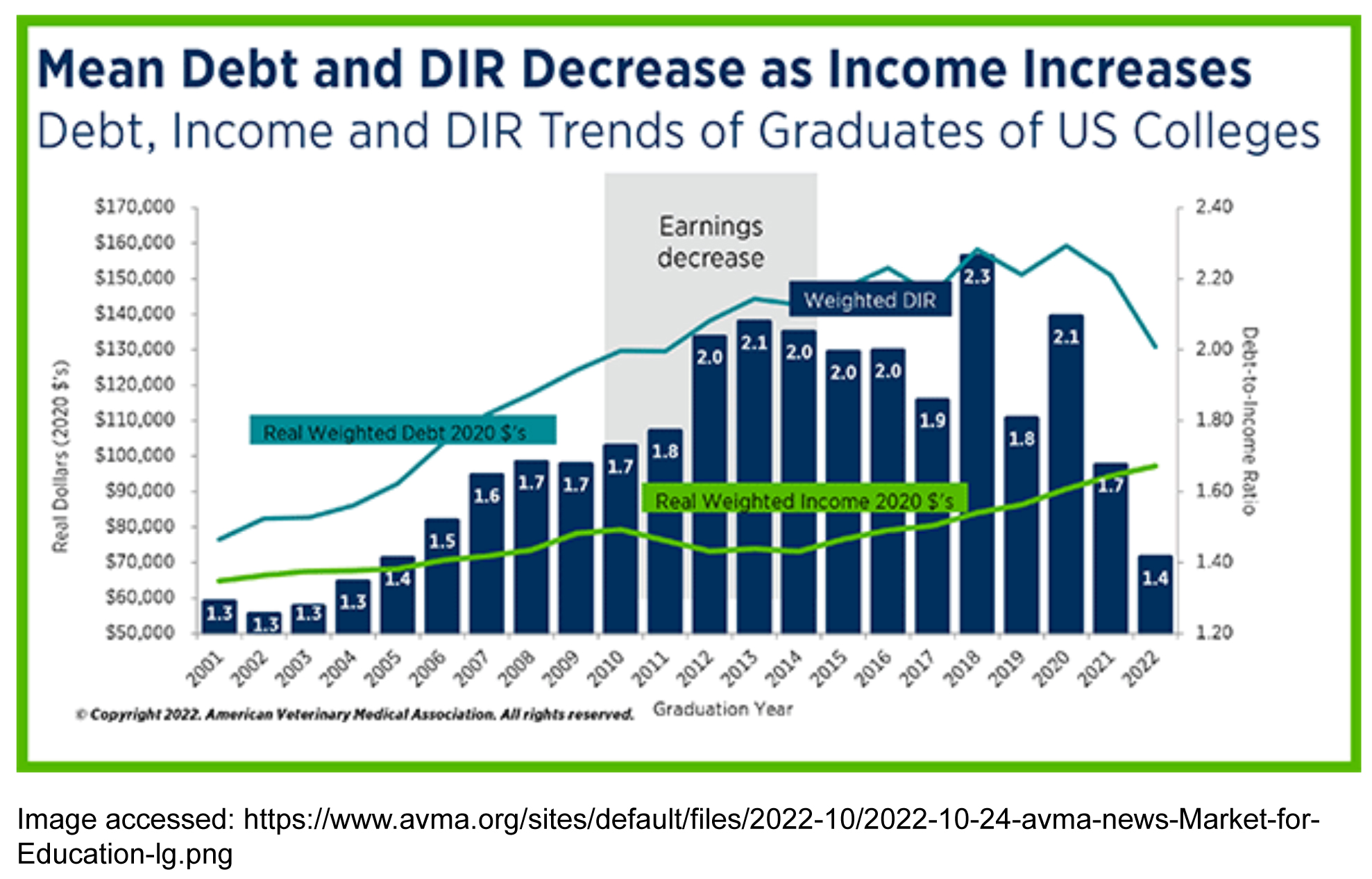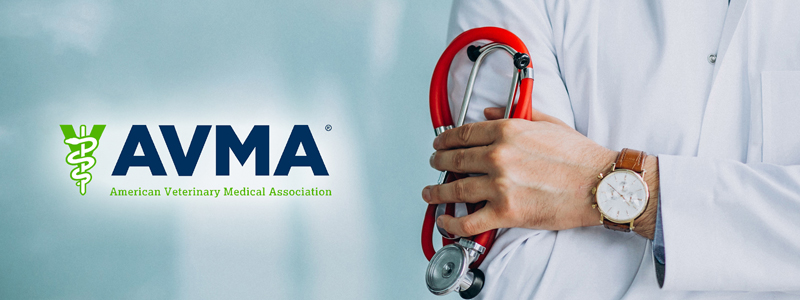BY: SAMANTHA BARTLETT, DVM
The results of the 2022 American Veterinary Medical Association (AVMA) Senior Survey were presented at the AVMA Veterinary Business and Economic Forum in October. The presenter, Bridgette Bain, PhD, senior economist and associate director in the AVMA Veterinary Economics Division, illustrated the positive trend that new graduate salaries are increasing even as the cost of their education is declining.
The mean debt-to-income ratio (DIR) of new veterinary graduates is 1.4:1. In comparison the mean DIR of new graduates in 2018 was 2.3:1. The current DIR has not been seen since 2005. The mean debt from earning a veterinary degree for 2022 graduates was $147,258 with a mean starting salary was $111,242 for full-time employment.
Of new graduates opting to go into private practice, 43% chose corporate practice. The mean starting salary at a corporate practice was $124,686 compared to $105,637 at independently owned practices. Signing bonuses were offered by corporate practices in 81% of offers to new graduates at a mean of $27,181 compared to 42% of offers from independent practices at a mean of $10,678. The percentage of new graduates going into companion animal practice has been increasing since 2013 with 48% choosing companion animal in 2022. New graduates choosing internships has decreased, with 23% choosing and internship in 2022. New graduates choosing mixed animal, food animal and equine has remained flat since 2013.
Debt from earning a veterinary degree was $200,000 or greater for 38% of new graduates including 13% who had $300,000 or more in debt. Those that had no debt included 18%, with 10% of new graduates having less than $100,000 and 34% with debt of $100,000 to $200,000. Of new graduates, 49% took out educational loans for more than three-quarters of tuition. However, the percentage covered by loans decreased from 60% to 55% and the percentage covered by family increased from 25% to 28% from 2020 to 2022.
New graduates had high compassion satisfaction and low burnout in their jobs. While 39% reported low burnout and 61% reported moderate, only 0.2% reported high burnout. This is supported by current studies on workplace burnout that find educational debt to income ratio to be a large contributor to workplace burnout in the veterinary profession.







